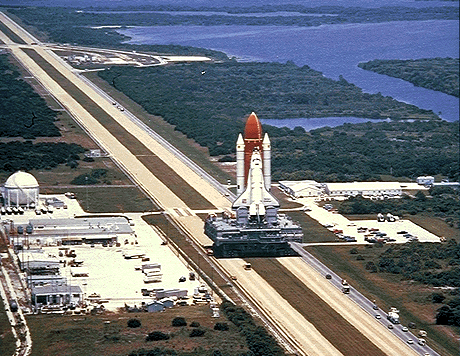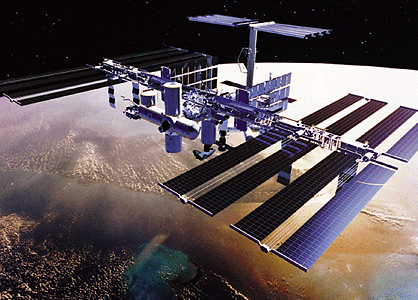Dragon Successfully Splashes Down in Pacific
Thursday, May 31st, 2012May 31, 2012
The American SpaceX company’s Dragon cargo capsule splashed down today in the Pacific Ocean off the coast of Baja California. The capsule’s return to Earth caps a historic first mission to the International Space Station (ISS) by a privately operated vehicle.
Dragon, the first commercial spacecraft, delivered the goods to the ISS on May 25. Lofted into orbit from Cape Canaveral on May 22 on a Falcon 9 rocket, the unpiloted space capsule was captured by ISS crew members using the station’s robot arm. “Looks like we got us a dragon by the tail,” reported astronaut Don Pettit after the successful maneuver. The Falcon, built by Space Exploration Technologies Corp. of Hawthorne, California–also known as SpaceX–is the first American spacecraft to visit the ISS since NASA conducted its last shuttle flight in July 2011. NASA has been relying on cargo transports launched by Russia, Japan, and the European Union to ferry supplies to the space station.
Crew members entered Dragon on May 26 and unloaded the 1,200 pounds (544 kilograms) of food, clothing, water, and other supplies inside. The space capsule also carried 15 science experiments designed by U.S. students, the third round of experiments launched into space under the Student Flight Experiments Program (SSEP). The experiments, known collectively as Aquarius, will assess the effects of microgravity on physical, chemical, and biological systems, according to NASA. The SSEP experiments carried by Dragon will be the first completed by ISS crew members. The previous two payloads of experiments were completed on shuttles in 2011.

The Falcon 9 and its Dragon space capsule, the first nongovernmental space vehicle launched to the International Space Station, lifts off from Cape Canaveral Air Force Station on May 22, 2012. (NASA TV)
Unpiloted spacecraft have been carrying supplies to the ISS since 2000. However, Dragon is the only transport vehicle designed to carry cargo back to Earth. All the other resupply vehicles burn up in the atmosphere on their return. SpaceX has a $1.6-billion contract to fly at least 12 delivery missions to the ISS over the next few years.
Additional World Book articles:





